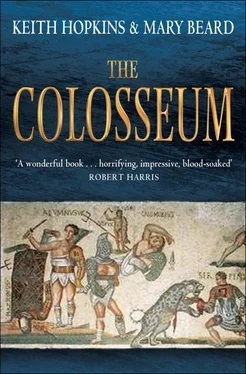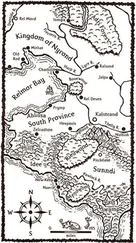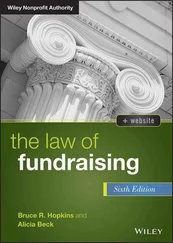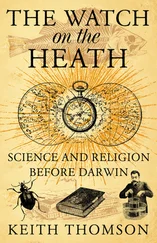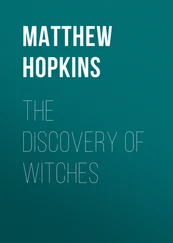Keith Hopkins - The Colosseum
Здесь есть возможность читать онлайн «Keith Hopkins - The Colosseum» весь текст электронной книги совершенно бесплатно (целиком полную версию без сокращений). В некоторых случаях можно слушать аудио, скачать через торрент в формате fb2 и присутствует краткое содержание. Город: London, Год выпуска: 2011, ISBN: 2011, Издательство: Profile Books, Жанр: История, на английском языке. Описание произведения, (предисловие) а так же отзывы посетителей доступны на портале библиотеки ЛибКат.
- Название:The Colosseum
- Автор:
- Издательство:Profile Books
- Жанр:
- Год:2011
- Город:London
- ISBN:9781846684708
- Рейтинг книги:3 / 5. Голосов: 1
-
Избранное:Добавить в избранное
- Отзывы:
-
Ваша оценка:
- 60
- 1
- 2
- 3
- 4
- 5
The Colosseum: краткое содержание, описание и аннотация
Предлагаем к чтению аннотацию, описание, краткое содержание или предисловие (зависит от того, что написал сам автор книги «The Colosseum»). Если вы не нашли необходимую информацию о книге — напишите в комментариях, мы постараемся отыскать её.
The Colosseum — читать онлайн бесплатно полную книгу (весь текст) целиком
Ниже представлен текст книги, разбитый по страницам. Система сохранения места последней прочитанной страницы, позволяет с удобством читать онлайн бесплатно книгу «The Colosseum», без необходимости каждый раз заново искать на чём Вы остановились. Поставьте закладку, и сможете в любой момент перейти на страницу, на которой закончили чтение.
Интервал:
Закладка:
That changed in the 1870s when, under State rather than Church sponsorship, substructions were uncovered again. This time the religious furniture of the arena was treated with no such delicacy: the Stations of the Cross were to be torn down, as was the central cross – and the then resident hermit (who had a picturesque hovel above the arena) was to be summarily evicted. It caused an outcry from many Catholics: ‘pray-ins’ were held in the arena in an attempt to stop the work proceeding and the Pope himself made his protests. But to no avail. Excavations started in 1874 – the archaeologist, Pietro Rosa, apparently using the threat of a ‘moonlight masquerade’ which had been planned for the Colosseum as an alibi for the work (better an excavation than the profanation of the sacred site with a carnival, or so his argument went). They got much further than the earlier excavators, revealing the complete depth of the substructions over most of the arena. But it was enormously expensive and once more drainage proved problematic. The hole flooded with water which soon stagnated and it was several years before it could be channelled out.
Rodolfo Lanciani, an archaeologist who wrote regular reports on archaeological news from Rome for the English magazine The Athenaeum , described the eventually successful draining in April 1879: ‘The stagnant waters which inundated the substructions of the Coliseum were drained off some days ago amidst loud cheers from the crowd assembled to witness the ceremony.’ But he goes on: ‘Poor Coliseum! it was no longer recognisable since the upsetting of the arena by Signor Rosa in 1874.’ Just over half of the basement area remained on display, while it was still possible to walk over the rest of the ‘surface’ of the arena, until that too was dug up in the 1930s. It is a sad irony that in the very year, 1878, that Henry James published his Daisy Miller , with its fatal moonlight tryst under the cross in the arena’s centre, the cross was no more and large areas of the arena were submerged beneath pools of stagnant water.
Religion never fully returned to the Colosseum. From the 1870s it was increasingly established as a state monument and an archaeological site. Indeed when the Pope turns up on Good Friday, as he still does, to celebrate the Stations of the Cross, there is a very strong sense that the monument no longer counts as ‘his’, that religion is being allowed briefly to intrude into the secular world (much as when the Druids are admitted to Stonehenge for the summer solstice). That said, there is a strange twist to the tale of the relations of the Church and the archaeology of the site which goes back to the Fascist era.
Mussolini, predictably enough, given his enthusiasm for the archaeology of the ancient city of Rome, sponsored further major excavations of the substructions, completely revealing what had still been left covered in the 1870s. He also made the Colosseum one of the focal points of his vast new road, the Via del Impero (‘Imperial Way’), as it was then called, leading to the Piazza Venezia and he entertained Hitler there on his state visit in 1938. Hitler was apparently entranced by the building, spent several hours in it (when the planned military parades were conveniently rained off) and saw in its design a model for a mass gathering-place for his Volk . But, in addition to impressing fellow dictators, Mussolini was concerned to smooth over the potential anxieties of the Catholic Church. So at the north side of the Colosseum’s arena, the Fascist regime put a new cross to replace the one removed in the 1870s. Underneath they placed four inscriptions in Latin. One carried the words of a hymn regularly sung on Good Friday. Another – matching the tone of Benedict’s inscription (pp. 164-5) – recorded a rather euphemistic version of the removal of the eighteenthcentury cross:
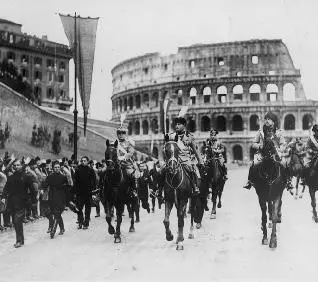
Where the old cross stood religiously placed by our ancestors in the Flavian Amphitheatre… removed on account of the vicissitudes of time, this new one takes its place… in the year of our Lord 1926.
The two others recorded the date according to different conventions: the first noting it as the fifth year of the pontificate of Pope Pius XI (and the sixteen-hundredth anniversary of the rediscovery by Helena, the mother of the emperor Constantine, of the remains of the ‘true cross’ on which Christ had been crucified); the second noting it as the twenty-sixth year of the reign of King Victor Emmanuel II and the fourth year of Mussolini’s dictatorship. Every political or religious option was covered, in other words.
Mussolini’s cross still stands at the side of the Colosseum’s arena. But the inscribed texts were smashed when Fascism fell. Their wording is known because it was published at the time – and also because archaeologists have recovered a few fragments of the stones themselves. That is the twist. It is a new stage in the complex balance of power between archaeology and religion in the arena over the last 500 years to find archaeology now devoting itself to the reconstruction of this religious monument of Mussolini.
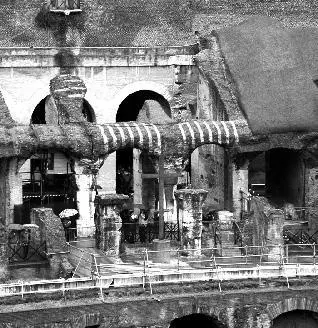
BOTANISTS
It was not only the paraphernalia of religion that was removed when the archaeologists moved in to the arena in the 1870s. As Murray’s Handbook observed in 1843, while regretting that there were no dried flowers on sale as souvenirs, one of the main claims to fame of the Colosseum had long been its flora. For whatever reason – because of the extraordinary micro-climate within its walls or, as some thought more fancifully, because of the seeds that fell out of the fur of the exotic animals displayed in the ancient arena – an enormous range of plants, including some extraordinary rarities, thrived for centuries in the building ruins. The first catalogue of these was published in 1643 as an appendix to a herbal by Domenico Panaroli, scientist, astronomer and professor of Botany and Anatomy at the University of Rome. He listed a total of 337 different species. A hundred and fifty years later in 1815, in a work entirely devoted to the ‘plants growing wild in the Flavian amphitheatre’, another Professor of Botany and keeper of the Botanical Garden on the Janiculan Hill in Rome, Antonio Sebastiani, listed a total of 261 species – the reduced number perhaps connected not so much with Sebastiani’s lack of observational skills but with the major excavations and consolidation work on the monument that would have disturbed the flora in the early years of the nineteenth century.
The most impressive and lavish catalogue, however, was the work of an English doctor and amateur botanist from Sheffield, Richard Deakin. In 1855 he published The Flora of the Colosseum , a magnificently illustrated compendium of 420 different species (though modern scientists have pedantically reduced his total to 418). Deakin had a keen eye for the symbolic value of what he found. One of his specimens was a plant known as Christ’s Thorn:
Few persons… will notice this plant flourishing upon the vast ruins of the Colosseum of Rome, without being moved to reflect upon the scenes that have taken place on the spot on which he stands, and remember the numbers of these holy men who bore witness to the truth of their belief in Jesus, and shed their blood before the thousands of Pagans assembled around, as a testimony, securing for themselves an eternal crown, without thorns, and to us those blessed truths, on which only we build our future hope of bliss, and derive our present peace and comfort.
Читать дальшеИнтервал:
Закладка:
Похожие книги на «The Colosseum»
Представляем Вашему вниманию похожие книги на «The Colosseum» списком для выбора. Мы отобрали схожую по названию и смыслу литературу в надежде предоставить читателям больше вариантов отыскать новые, интересные, ещё непрочитанные произведения.
Обсуждение, отзывы о книге «The Colosseum» и просто собственные мнения читателей. Оставьте ваши комментарии, напишите, что Вы думаете о произведении, его смысле или главных героях. Укажите что конкретно понравилось, а что нет, и почему Вы так считаете.
